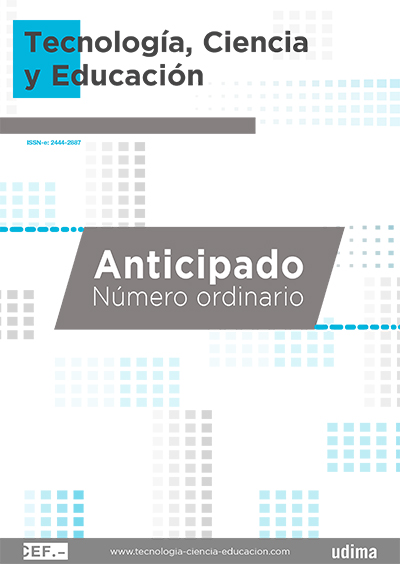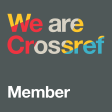New technologies for the inclusion of people with disabilities: the effectiveness of the Gradior program
DOI:
https://doi.org/10.51302/tce.2025.24403Keywords:
disability, information and communication technologies (ICT), cognitive training, autonomy, cognitive impairment, dependency, inclusionAbstract
People with disabilities have difficulties carrying out basic activities of daily life that affect their inclusion. Information and communication technologies (ICT) have an important influence on the development and implementation of programs for the training of higher functions that are affected due to said disability. The objective of this study is to determine if the application of Gradior software for cognitive training improves the autonomy and cognitive impairment of people with disabilities due to acquired brain injury (ABI). 21 people participated, 13 belonging to the experimental group and 8 to the control group, aged between 30 and 65 years, to whom the Gradior program was implemented for 32 weeks. Four instruments have been administered, three of them to measure the level of autonomy and dependence (Barthel index, modified Barthel index and Katz index) and a fourth (Pfeiffer test) to analyze the level of cognitive impairment. The results show that the scores in autonomy and ability to carry out activities of daily living have improved in the experimental group, as well as an improvement in their cognitive deterioration. Cognitive training with the Gradior program can lead to progress in higher cognitive functions in people with disabilities due to ABI, thus promoting their inclusion.
Downloads
References
Barrero Solís, C. L., García Arrioja, S. y Ojeda Manzano, A. (2005). Índice de Barthel (IB): un instrumento esencial para la evaluación funcional y la rehabilitación. Plasticidad y Restauración Neurológica, 4(1-2), 81-85.
Barrientos-García, A. y Barrera-Algarín, E. (2022). El uso del programa Gradior como terapia de estimulación cognitiva en personas mayores. Revista Española de Geriatría y Gerontología, 57(1), 35-42. https://doi.org/10.47197/retos.v46.91005
Bonilla-Santos, J., González-Hernández, A., Amaya-Vargas, E., Ríos-Gallardo, Á. y Bonilla-Santos, G. (2016). Resultados de un programa de rehabilitación neurocognitiva en pacientes con secuelas de trauma craneoencefálico. Revista Chilena de Neuropsiquiatría, 54(2), 113-122. https://doi.org/10.4067/S0717-92272016000200005
Bueno Aguado, Y. (2012). Estudio de la efectividad de un programa de intervención denominado «Sistema estructurado de entrenamiento en memoria. Método Gradior», como un instrumento válido para la estimulación y el entrenamiento cognoscitivo en personas mayores (Tesis de doctorado, Universidad de Salamanca).
Cano de la Cuerda, R. y Miangolarra Page, J. M. (2018). Introducción a las nuevas tecnologías en neurorrehabilitación. En R. Cano de la Cuerda (Coord.), Nuevas tecnologías en neurorrehabilitación: aplicaciones diagnósticas y terapéuticas (pp. 13-22). Editorial Médica Panamericana.
Carrizales Dávila, J. M., Mariscal Flores, B. J., Mora Herranz, A. y Ochoa Suárez, M. F. (2016). Uso de nuevas tecnologías en neurorrehabilitación. Universidad Complutense de Madrid.
Carvalho-Gómez, C. A. Fernández-Fernández. M. A. y Gilibert-Sánchez, N. (2019). Nuevas tecnologías en el campo de la neurorrehabilitación. ¿Una línea de intervención? Interpsiquis. XX Congreso Virtual Internacional de Psiquiatría, Psicología y Salud Mental, 1 a 12 de abril.
Cid-Ruzafa, J. y Damián-Moreno, J. (1997). Valoración de la discapacidad física: el índice de Barthel. Revista Española de Salud Pública, 71(2), 127-137.
Climent López, M., Carrascosa Sánchez, C. y Botija Yagüe, M. (2022). Calidad de vida familiar en personas con daño cerebral adquirido. El caso de la asociación Nueva Opción. Revista Española de Discapacidad, 10(1), 55- 92. https://doi.org/10.5569/2340-5104.10.01.03
Connor, B. B. y Shaw, C. A. (2016). Case study series using brain-training games to treat attention and memory following brain injury. Journal of Pain Management, 9(3), 217-226.
Contreras-Somoza, L. M.ª, Toribio-Guzmán, J. M., Irazoqui, E., Viñas-Rodríguez, M.ª J., Gil-Martínez, S., Castaño-Aguado, M.ª, Lucas-Cardoso, E., Parra-Vidales, E., Perea-Bartolomé, M.ª V. y Franco-Martín, M. Á. (2024). Usability and user experience impressions of older adults with cognitive impairment and people with schizophrenia towards Gradior, a cognitive rehabilitation program: a cross-sectional study. Health Informatics Journal, 30(4). https://doi.org/10.1177/14604582241295938
Díaz, A. A., Perea, M. V., Toribio-Guzmán, J. M., Martínez-Abad, F., Parra, E., Bueno, Y., Van der Roest, H. G. y Franco-Martín, M. A. (2022). Determinantes de la adherencia a un programa de entrenamiento cognitivo computarizado «GRADIOR» para las personas con deterioro cognitivo leve (DCL) y demencia leve. Journal of Clinical Medicine, 11, 1714. https://gredos.usal.es/bitstream/handle/10366/152598/Art.%204.pdf?sequence=5&isAllowed=y
Domensino, A. F., Verberne, D., Prince, L., Fish, J., Winegardner, J. y Bateman, A. (2021). Client experiences with holistic neuropsychological rehabilitation: «It is an ongoing process». Neuropsychological Rehabilitation, 32(8), 2.147-2.169. https://doi.org/10.1080/09602011.2021.1976222
Domensino, A. F., Winkens, I., Haastregt, J. C. M. van, Bennekom, C. A. M. van y Heugten, C. M. van. (2020). Defining the content of a minimal dataset for acquired brain injury using a Delphi procedure. Health and Quality of Life Outcomes, 18, 1-10. https://doi.org/10.1186/s12955-020-01286-3
Fernández Martínez, E., Bringas Vega, M.ª L, Salazar Santana, S., Rodríguez Pérez, D., García Navarro, M.ª E. y Torres Aguilar, M. (2012). Clinical impact of RehaCom software for cognitive rehabilitation of patients with acquired brain injury. MEDICC Review, 14(4), 32-35. https://doi.org/10.37757/MR2012V14.N4.8
Fernández-Sánchez, M., Aza-Hernández, A. y Verdugo-Alonso, M. A. (2022). Modelos de atención pública a la población con daño cerebral adquirido en España: un estudio de la situación por comunidades autónomas, Revista de Neurología, 74(08), 245-257.
Ford, A., Douglas, J. y O´ Halloran, R. (2021). The experience of close personal relationships after stroke: scoping review and thematic analysis of qualitative literature. Brain Impairment, 23(3), 1-31. https://doi.org/10.1017/BrImp.2021.12
Fumero Vargas, G. (2015). Usabilidad de un programa de rehabilitación neuropsicológica por ordenador «Gradior» en personas con enfermedad mental grave y prolongada (Tesis doctoral, Universidad de Salamanca). https://gredos.usal.es/handle/10366/129759
García-Casal, J. A, Loizeau, A., Csipke, E., Franco-Martín, M., Perea-Bartolomé, M. V. y Orrell, M. (2017). Computer-based cognitive interventions for people living with dementia: a systematic literature review and meta-analysis. Aging & Mental Health, 21(5), 454-467. https://doi.org/10.1080/13607863.2015.1132677
Gates, N. J., Sachdev, P. S., Fiatarone Singh, M.ª A. y Valenzuela, M. (2011). Cognitive and memory training in adults at risk of dementia: a systematic review. BMC Geriatrics, 11. https://doi.org/10.1186/1471-2318-11-55
Gázquez Hernández, J. F. (2022). Educación social y discapacidad: aplicación del programa Gradior 4.0 para la mejora cognitiva en personas con daño cerebral adquirido (Tesis de doctorado, Universidad de Almería). https://repositorio.ual.es/handle/10835/13909
González-Rodríguez, R., Gandoy-Crego, M. y Clemente Díaz, M. (2017). Determinación de la situación de dependencia funcional. Revisión sobre los instrumentos de evaluación más utilizados. Gerokomos, 28(4), 184-188. https://scielo.isciii.es/pdf/geroko/v28n4/1134-928X-geroko-28-04-00184.pdf
Granger, C. Albrecht, G. y Hamilton, B. (1979). Outcome of comprehensive medical rehabilitation: measurement by PULSES profile and the Barthel index. Archives of Physical Medicine and Rehabilitation, 60(4),145-54.
Guerrero Pertíñez, G. y García Linares, A. (2015). Plataformas de rehabilitación neuropsicológica: estado actual y líneas de trabajo. Neurología, 30(6), 359-366. https://doi.org/10.1016/j.nrl.2013.06.015
Häggström, A. y Larsson-Lund, M. (2008). The complexity of participation in daily life: a qualitative study of the experiences of persons with acquired brain injury. Journal of Rehabilitation Medicine, 40(2), 89-95. https://doi.org/10.2340/16501977-0138
Herrera, C., Chambon, C., Michel, B. F., Paban, V. y Alescio-Lautier, B. (2012). Positive effects of computer-based cognitive training in adults with mild cognitive impairment. Neuropsycologia, 50(8), 1.871-1.881. https://doi.org/10.1016/j.neuropsychologia.2012.04.012
Intriago Ceme, G. V. y Rodas, J. A. (2024). Programa de entrenamiento cognitivo para la mejora de las actividades de la vida diaria del adulto mayor. PSIDIAL: Psicología y Diálogo de Saberes, 3(núm. especial), 137-153. https://doi.org/10.33936/psidial.v1iEspecial.6412
Karpa, J., Chernomas, W., Roger, K. y Heinonen, T. (2020). Families´ experiences living with acquired brain injury: «thinking family»-a nursing pathway for family-centered care. Nursing Research and Practice, 2020(1). https://doi.org/10.1155/2020/8866534
Lassaletta Atienza, A. (2020). The Invisible Brain Injury: Cognitive Impairments in Traumatic Brain Injury, Stroke and Other Acquired Brain Pathologies. Routledge.
Peretz, C., Korczyn, A. D., Shatil, E., Aharonson, V., Birnboim, S. y Giladi, N. (2011). Computer-based, personalized cognitive training versus classical computer games: a randomized double-blind prospective trial of cognitive stimulation. Neuroepidemiology, 36, 91-99. https://doi.org/10.1159/000323950
Politis, A. M. y Norman, R. S. (2016). Computer-based cognitive rehabilitation for individuals with traumatic brain injury: a systematic review. Perspectives of the ASHA Special Interest Groups, 1(2), 18-46. https://doi.org/10.1044/persp1.SIG2.18
Quan, W., Liu, S., Cao, M. y Zhao, J. (2024). A comprehensive review of virtual reality technology for cognitive rehabilitation in patients with neurological conditions. Applied Sciences, 14, 1-18. https://www.mdpi.com/2076-3417/14/14/6285
Quezada García, M. Y. (2020). Estudio sobre daño cerebral e inserción laboral. Federación Española de Daño Cerebral. https://bit.ly/3BSGRZ3
Rodríguez Molino, J. (2015). Evaluación de una intervención psicopedagógica en una persona con DCL a través del entrenamiento cognitivo y el software mayor-Estudio de caso en la Fundación INTRAS (Trabajo fin de máster, Universidad de Valladolid). https://uvadoc.uva.es/bitstream/handle/10324/14978/TFMG466.pdf?sequence=1&isAllowed=y
Ruiz, M.ª J., Bori, I., Gangoiti, L., Marín, J. y Quemada, J. I. (Coord.). (2012). Modelo de atención a las personas con daño cerebral. Colección Documentos. Serie: Documentos Técnicos. Ministerio de Trabajo y Asuntos Sociales/Secretaría de Estado de Servicios Sociales, Familias y Discapacidad/Instituto de Mayores y Servicios Sociales (IMSERSO).
Rute Pérez, S. (2018). Intervención neuropsicológica basada en nuevas tecnologías para personas con daño cerebral adquirido en fase crónica y para mayores (Tesis doctoral, Universidad de Granada).
Sánchez Tarifa, M.ª P. (2017). Contribución de la rehabilitación en pacientes de la unidad de ictus en términos de discapacidad y calidad de vida (Tesis doctoral, Universidad Complutense de Madrid). https://docta.ucm.es/entities/publication/1bf200fb-3ec5-48fc-94e6-1539758d3296
Santos, A. L. (2018). Implementación del software «Tango H» en personas con daño cerebral adquirido (Trabajo fin de grado, Universidad de La Laguna). https://riull.ull.es/xmlui/handle/915/11398
Toribio-Guzmán, J., Parra Vidales, E., Viñas Rodríguez, M., Bueno Aguado, Y., Cid Bartolomé, M. y Franco Martín, M. (2018). Rehabilitación cognitiva por ordenador en personas mayores: programa Gradior. Aula: Revista de Pedagogía de la Universidad de Salamanca, 24, 61-75. https://doi.org/1014201/aula2018246175
Turner-Stokes, L. (2008). Evidence for the efficacy of multi-disciplinary rehabilitation following acquired brain injury: a synthesis of two systematic approaches. Journal of Rehabilitation Medicine, 40, 691-701. https://doi.org/10.2340/16501977-0265
Verdugo, M. A., Aza, A., Orgaz, M.ª B., Fernández, M.ª y Amor, A. M. (2021). Longitudinal study of quality of life in acquired brain injury: a self-and proxy-report evaluation. International Journal of Clinical and Health Psychology, 21(2), 1-11. https://doi.org/10.1016/j.ijchp.2020.100219
Verdugo, M. A., Fernández, M.ª, Gómez, L. E., Amor, A. M. y Aza, A. (2019). Predictive factors of quality of life in acquired brain injury. International Journal of Clinical and Health Psychology, 19(3), 189-197. https://doi.org/10.1016/j.ijchp.2019.06.004
Wilson, B. A., Gracey, F., Evans, J. J. y Bateman, A. (2009). Background and theory. Towards a comprehensive model of neuropsychological rehabilitation. Neuropsychological Rehabilitation. Theory, Models, Therapy and Outcome (p. 14). Cambridge University Press.
Wilson, B. A., Mac Auliffe, M. y Salas, C. (2020). General principles of neuropsychological rehabilitation. Panamerican Journal of Neuropsychology, 14(2).
Downloads
Published
How to Cite
Issue
Section
License
Copyright (c) 2025 Juan Francisco Gázquez Hernández, Luis Ortiz Jiménez, José Manuel Aguilar Parra, Antonio Martínez Sánchez

This work is licensed under a Creative Commons Attribution-NonCommercial-NoDerivatives 4.0 International License.

























